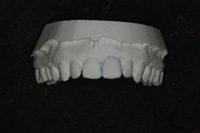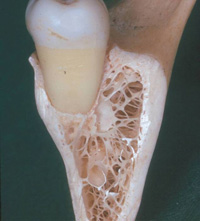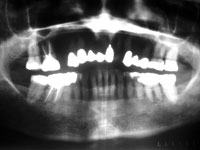It’s no secret that patients enter your practice every day with a wide variety of dental needs. As you know, some of these treatment needs are scheduled and resolved quickly. Other treatment needs compete for priority as they contend with a host of rivals such as new wardrobes, vacations, time, and fears. Typically, the dentist is the first to introduce the dental need, explain its significance, and guide the patient toward accepting the solution. It’s not unusual for the patient to follow the dentist’s line of reasoning and appear to accept treatment. But something happens. Fees are discussed and payment options are presented. Yet, the patient doesn’t schedule. What happened?
OBJECTIONS VERSUS CONDITIONS
Periodically, conditions exist that do not permit patients to accept treatment. Some of those conditions may include filing for bankruptcy, managing the final stages of a critically ill parent, or managing a job relocation. These conditions take time to resolve, forcing dental care to a position of lower priority. Other objections, however, can be resolved and are often related to fearing loss of control, embarrassment, pain, concerns for time and money, or frustrations related to busy schedules that involve managing multiple and complex priorities. The role of the skillful administrative staff member includes recognizing the difference between a condition and an objection and having the verbal skills to support the patient through the problem-solving process.
ISOLATE THE REAL OBJECTION
Patient No. 1: “One thousand, one hundred fifty dollars for a crown! Gosh! That’s a down payment on a car!”
Staff: “You are surprised about the fee.”
Patient: (slightly calmer). “No. Not really. I just didn’t know that I had this problem and hadn’t planned on the expense.”
Staff: “Having emergency dental treatment is frustrating. It’s not something we can plan on.”
Patient: “No, I sure didn’t plan on this. But I’ll work it out like everything else… one way or another.
Staff: “In these circumstances, some patients prefer the option of a credit card charge to writing a check. Would you prefer to place this on a charge card?”
Patient No. 2: “The last root canal I had was a disaster!”
Staff: “You’re worried about this type of procedure.”
Patient: “Well, the treatment itself wasn’t a big deal, but then I had to have all this other stuff done to the tooth that I wasn’t told about. “
Staff: “So, you were surprised by additional treatment, which you were not prepared for.
Patient: “Yes! I thought I’d never stop going to the dentist. The root canal was a couple of visits, and then they told me I had to make all of these trips for a crown or something so that the tooth wouldn’t break. I came close to getting fired at work!”
Staff: “So, it’s important to you that we coordinate your appointments carefully to not interfere with your work.”
Patient: (slightly calmer) “Yes. I can’t go through that again.”
Staff: “Let’s assure that it doesn’t happen again and look together at your treatment plan and our scheduling options, okay?”
ACTIVELY LISTENING IS THE KEY TO UNDERSTANDING
Highlighted in both examples are the patients’ expressed feelings and a summary of what the staff member understood the patient to be expressing. This skill, called active listening, enables you to truly understand patients’ concerns. Not only does this calm patients, it also positions them to be open to problem solving; ie, removing the boulder that blocks their ability to say yes and accept their treatment plan. Using the analogy of an onion, if the true objection lies in the center of the onion, then active listening (paraphrasing the patient’s emotion and content of their message) allows you to peel away the layer(s) to understand the real truth and meaning behind the patient’s initial negative response.
MONITOR FOR RESULTS
Promoting treatment is fun because it helps patients accept what they need and more easily enables office members to achieve financial goals. Sales skills, like any other administrative and clinical skills, are learned by awareness and practice. To best learn these skills, utilize monthly staff meetings to review the last month’s new patient charts. Review those patients successfully scheduled for treatment and those with treatment pending. Discuss the various responses to treatment presentations and pay particular attention to those patients who initially seemed hesitant or simply said no. By reviewing the cases of patients who were slow to accept treatment, the dental team can share success stories and learn from each other’s victories. These meetings also ensure that sales skills continue to be a priority and focus for the practice.
GIVE YOURSELF A RAISE
Those “work smarter, not harder” raises are always the most rewarding. If an office increased its treatment acceptance from 80% to 85% (the industry standard), with 20 new adult patients presenting a conservative average treatment plan value of $1,500, the office would realize an additional annual revenue of $18,000 ($17,640 after 98% collections.) Better yet, 60% treatment acceptance is a more typical figure for dental teams that have not yet mastered professional sales skills. By learning these skills, dental teams can experience an 85% acceptance rate within a several-month period. Applying the same conservative value of an adult new patient treatment plan, based on 20 new patients per month and calculating a 98% collection rate, additional revenues generated are $88,200. And, guess where the financial icing is on this cake? Hygiene. These figures don’t even include the additional revenues generated from improved treatment acceptance generated from your hygiene department.
Ms. Healey owns PRN Consulting, Inc, which conducts seminars and in-office management consulting services designed to positively and dramatically impact net profit, dentist/staff satisfaction, and stability. These services include overhead management, system organization, team building, interviewing, and communications. Ms. Healey can be reached at (706) 219-1957 or prnconsult.com.











